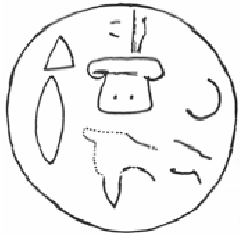|
Hittite Hieroglyphs
Anatolian hieroglyphs are an indigenous logographic script native to central Anatolia, consisting of some 500 signs. They were once commonly known as Hittite hieroglyphs, but the language they encode proved to be Luwian, not Hittite, and the term Luwian hieroglyphs is used in English publications. They are typologically similar to Egyptian hieroglyphs, but do not derive graphically from that script, and they are not known to have played the sacred role of hieroglyphs in Egypt. There is no demonstrable connection to Hittite cuneiform. History Individual Anatolian hieroglyphs are attested from the second and early first millennia BC across Anatolia and into modern Syria. A biconvex bronze personal seal was found in the Troy VIIb level (later half of the 12th century BC) inscribed with Luwian Hieroglyphs. The earliest examples occur on personal seals, but these consist only of names, titles, and auspicious signs, and it is not certain that they represent language. Most actual text ... [...More Info...] [...Related Items...] OR: [Wikipedia] [Google] [Baidu] |
Luwian Language
Luwian (), sometimes known as Luvian or Luish, is an ancient language, or group of languages, within the Anatolian branch of the Indo-European language family. The ethnonym Luwian comes from ''Luwiya'' (also spelled ''Luwia'' or ''Luvia'') – the name of the region in which the Luwians lived. Luwiya is attested, for example, in the Hittite laws. The two varieties of Proto-Luwian or Luwian (in the narrow sense of these names) are known after the scripts in which they were written: Cuneiform Luwian (''CLuwian'') and Hieroglyphic Luwian (''HLuwian''). There is no consensus as to whether these were a single language or two closely related languages. Classification Several other Anatolian languages – particularly Carian, Lycian, Lydian and Milyan (also known as Lycian B or Lycian II) – are now usually identified as related to Luwian – and as mutually connected more closely than other constituents of the Anatolian branch.Anna Bauer, 2014, ''Morphosyntax of the Noun Phrase ... [...More Info...] [...Related Items...] OR: [Wikipedia] [Google] [Baidu] |
